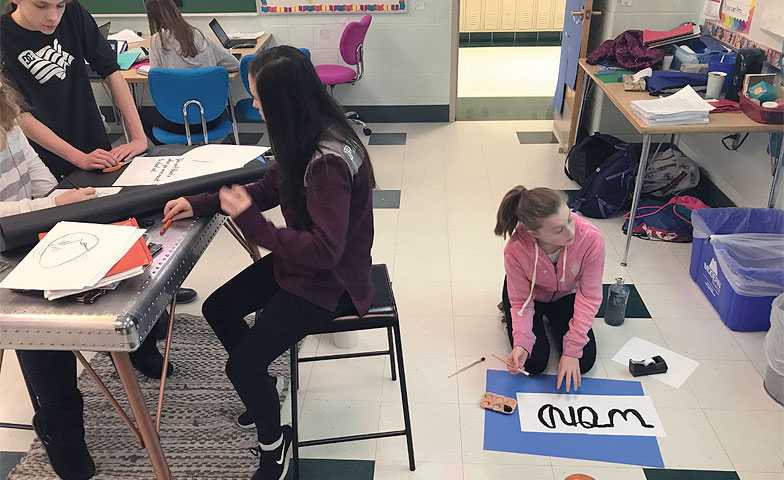Tapping into the arts helps students—and teachers—make an emotional investment in reading
Plagiarism is both easier to commit due to the tremendous amount of content “out there,” but also ridiculously easy to catch with a simple Google search. As an English teacher, I’ve found that if my assignment can be easily plagiarized, it probably isn’t that engaging for kiddos. For example, if I ask students to do a reader’s response to Stargirl, The Giver, or The Outsiders, they can find plenty of online examples and summaries. However, if I offer students artist choices, not only do they become emotionally invested in the projects, they also have a purpose for reading other than “I told you to.” As all middle school educators know, motivating middle schoolers can sometimes be a challenge!
I teach at a large middle school in New York, so collaborating with an art or music teacher is often difficult since we don’t always share the same students. I’ve compensated for that in my own classroom by creating projects that allow students to creatively respond to literature instead of perform rote tasks. I tell my students, “The assumption is that you read the book and understand it. I’m not going to give you a task that proves that you read it because that is easily faked. Sad but true. Instead, use this project to intrigue us or draw us into a conversation.” Here are a few of my favorite creative options that I offer students in response to independent reading:
Create a playlist that you might find on the protagonist’s phone or Ipod. Be sure to include the multiple moods your character experiences. Arrange the songs chronologically so that the first song correlates with the first few chapters, the second song goes along with the next few chapters and so on. There should be at least eight songs. Make an MP3 or share links with me to the songs. For each song, write a few sentences as if you were the character describing the selections.
Using GarageBand or some other platform, create an original soundtrack to the book. Follow the same general directions as above, focusing on the moods your character experiences throughout the course of the novel.
Create a piece of artwork that captures the essence of your book. Incorporate at least ten quotes that are important to the theme. You may “hide” the quotes, or they can be overt. On a separate sheet of paper, explain why you chose the quotes.
These are three examples that have highly engaged my middle school students, prevented the boring book report summary that is easily plagiarized, and made my job infinitely more interesting and rich. Conversations about why a student chose a particular song or how they slyly incorporated quotes into the strands of hair in the portrait they created are fascinating. Reading another summary? Not so much.
If there is one shift in education that has the most potential to enrich the lives of our students and create critical thinkers it is the move away from memorization and summarizing. These tasks make reading unappealing, assuming that we are making them do it in the first place. How can I convince anyone that reading is an amazing portal to vicarious experiences if I’m making you prove you read it? This is where book selection is key, and your school librarian can be an amazing resource for you and your students. Share conversations with your students about abandoning books yourself. I know that if I’m not hooked in the first chapter, I might as well move on to something else. Allowing students this type of freedom and choice will lead to engaged readers who want to express their reactions, artistically represent emotions and critical thinking, as well as create art that makes them proud of their learning.
My shift to providing engaging and creative assignments that tap into the arts has led to a young girl composing a funeral march for a character who’d been lost at sea, a vase with quotes woven into vines, an entire city of LEGO pieces, animations, masks, and recreated scenes in sculpture. Students have created videos of themselves acting out critical scenes, talk shows where they pretend to interview the author, and commercials that advertise an important symbol from the novel. Deane Alban, in her article, “The Mental Health Benefits of Art Are for Everyone,” explains the magic motivation that occurs: “Creating art increases the feel-good neurotransmitter dopamine. Dopamine has been called the ‘motivation molecule.’ It boosts drive, focus, and concentration. It enables you to plan ahead and resist impulses so that you can achieve your goals.” I don’t know about you, but I usually have a room full of middle school kiddos who could use more of the “motivation molecule!”


